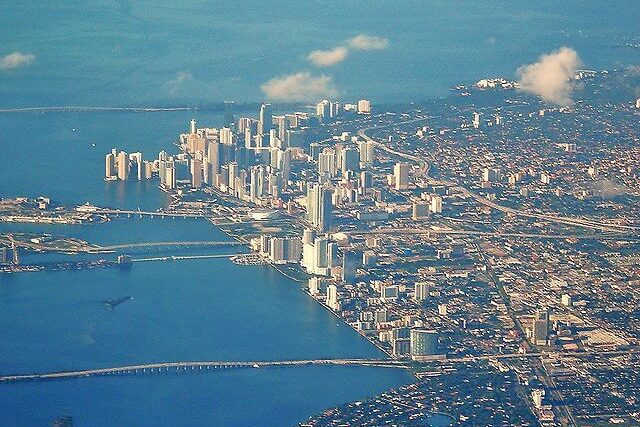
Coastal cities in the southern United States, including Miami, Houston, and New Orleans, are facing an even greater threat from sea-level rise than previously believed, according to a recent analysis.
Scientists have discovered a significant surge in ocean levels along the southeastern coast and Gulf of Mexico since 2010, resulting in an increase of nearly 5 inches (12.7 cm). This surge, which is more than double the global average, has fueled the intensification of cyclones such as Hurricane Ian, responsible for over $113 billion in damages and considered Florida’s costliest natural disaster and the third most expensive storm in US history, as reported by the National Oceanic and Atmospheric Administration (NOAA).
A study conducted by the University of Arizona, published in the Journal of Climate and reported by the Washington Post, offers a concerning new assessment of the escalating climate emergency, particularly in densely populated and vulnerable areas of the US. NASA’s existing projections indicate a potential sea-level rise of up to 12 inches (30 cm) by the mid-century, with longer-term forecasts suggesting even more alarming scenarios. The Gulf region from Texas to Florida and the southern Atlantic seaboard are expected to experience the most significant impact.
“The entire south-east coast and the Gulf Coast is feeling the impact of the sea-level rise acceleration,” the study’s author Jianjun Yin, professor of geosciences at the University of Arizona, told the Post.
“It turns out that the water level associated with Hurricane Ian was the highest on record due to the combined effect of sea-level rise and storm surge.”
The threat posed by rising sea levels looms over numerous densely populated cities located along or near the coast. Miami and Miami Beach, often seen as the epicenter of the climate emergency, regularly suffer from flooding during high tides. Property insurance rates in Florida, which has experienced over 40% of all US hurricane strikes according to NOAA, have skyrocketed in recent years.
New Orleans, Louisiana, and Houston, Texas, were severely affected by the two most expensive hurricanes in US history, Katrina in 2005 and Harvey in 2017, respectively. A recent book extract published by The Guardian highlights how Charleston, South Carolina, is grappling with the simultaneous challenges of rising sea levels and systemic racism, leaving the city on borrowed time according to many experts. The author, Susan Crawford, warns that what Charleston is facing is likely to occur in numerous coastal cities worldwide unless there is a substantial shift in attitude.
The Washington Post also reported on a second study, published on nature.com, which supports the findings of the University of Arizona analysis and confirms that an “acceleration” in sea-level rise is underway. Researchers at Tulane University in New Orleans emphasize that the increase in the Gulf and southeastern region exceeds the global average, with a surge of over 0.4 inches per year—an unprecedented rate in at least 120 years. The study highlights the impact of storms like Katrina and Hurricane Sandy in 2012, demonstrating that any further increase in sea-level rise, especially rapid ones, pose a threat to US national security and impede timely adaptation efforts.
The study also acknowledges the role of human activity in the Gulf region, specifically referring to “vertical land motion” (VLM). These human-induced factors contribute to the exacerbation of sea-level rise.
“It is well known that tide gauges in the Gulf of Mexico are subject to significant nonlinear VLM, likely related to oil, gas, or groundwater withdrawal. These nonlinear changes appear predominantly along the western portions of the US Gulf coast (Louisiana and Texas),” it says.
——————————————————————————
At Natural World Fund, we are passionate about stopping the decline in our wildlife.
The declines in our wildlife is shocking and frightening. Without much more support, many of the animals we know and love will continue in their declines towards extinction.
When you help to restore a patch of degraded land through rewilding to forests, meadows, or wetlands, you have a massive impact on the biodiversity at a local level. You give animals a home and food that they otherwise would not have had, and it has a positive snowball effect for the food chain.
We are convinced that this is much better for the UK than growing lots of fast-growing coniferous trees, solely to remove carbon, that don’t actually help our animals to thrive.
This is why we stand for restoring nature in the UK through responsible rewilding. For us, it is the right thing to do. Let’s do what’s right for nature!
Support our work today at https://naturalworldfund.com/ and join in the solution!

